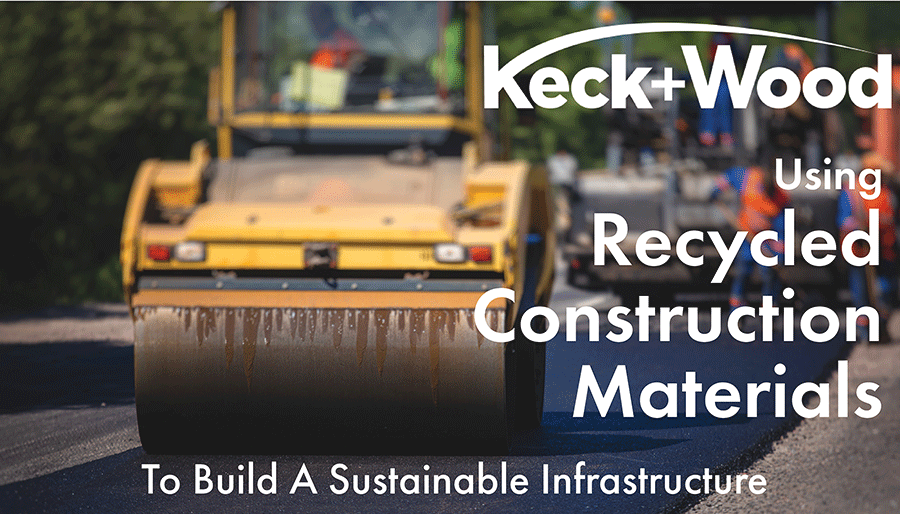
Civil engineers strive to create sustainable structures. Using recycled materials is one of the best ways to do this. Each material plays its part in creating attractive, sturdy bridges, highways, and other structures.
Here are four examples of recycled materials used in civil engineering projects:
- Recycled Asphalt Pavement (RAP)
- Concrete
- Bridge Steel
- Recycled Plastics
If you like the idea of recycling, you may wonder when and how these materials are incorporated into new structures. The civil engineers at Keck & Wood have compiled an overview of these materials and the pros and cons of using them.
Four Common Recycled Materials
Often, before constructing something, you have to tear down something else first. This leaves behind tons of asphalt, concrete, and steel. These materials tend to end up in a landfill. However, most of them can be reused for other projects, such as using recycled plastic to create strong structures, including bridges. Let’s look at these materials in depth.
Recycled Materials: Asphalt
The construction industry reuses approximately 96 million tons of asphalt to make new roads each year. To prepare it for reuse, recyclers mill, ground and remix old asphalt and combine it with new asphalt and aggregate materials. Liquid asphalt cement binds the components together. Asphalt is one of the most recycled materials in the world.
Recycled Materials: Concrete
Structures, from bridges and sidewalks to buildings, are made of concrete. You can find recycled concrete in pavement, abutments, piers and substructures for bridges. Construction teams also use recycled concrete to make aggregates used in concrete mixes and asphalt.
Recycled Materials: Bridge Steel
Most bridges contain millions of pounds (thousands of tons) of steel. Steel bridges can last a century or longer before requiring replacement. Even then, developers can use recycled steel to reduce waste. When recycled, steel doesn’t lose its structural shape, making it one of the most valued materials for construction projects.
Recycled Materials: Plastics
Many people don’t expect to see plastics on the list of construction materials. However, some types of asphalt contain recycled plastic. Besides forming the highways you drive on, plastics sometimes replace highway guardrail posts previously made of timber.
Pros and Cons of Using Recycled Materials in Civil Engineering
Although using recycled materials benefits the planet, there are also downsides. Below, review the pros and cons of incorporating recycled construction materials in your civil engineering projects.
Pros:
- Good for the environment. Reusing any materials keeps them out of landfills. This is a huge advantage over sending tons of construction materials off where it will sit for decades or centuries. Asphalt, concrete, plastic and other recycled materials won’t decompose like food items and fabrics.
- Saves you money. You can save money on raw materials by using recycled ones. Steel and asphalt, for example, maintain many of their attributes for decades or longer.
- Saves time. Incorporating recycled products can save time as you won’t have to wait for the production of new materials. This is particularly true if you face a shortage of raw materials.
Cons:
- Aesthetic look. If you want to use recycled construction materials, you may have fewer options in terms of color and other attributes. For example, reused asphalt or concrete changes the color of the roadway based on the exact components available.
- Limited supply. There are millions of tons of recycled materials in civil engineering projects. However, you may have to wait for materials to become available when collected from collapsed and demolished structures and roadways.
Examples of Using Recycled Materials
The Dawyck Estate river crossing spans Scotland’s River Tweed. At 30 meters long, it is the longest recycled bridge in the world, made entirely of recycled plastics. Need more examples? The recycled plastic Bridge at Fort Bragg, NC, consists mainly of glass and high-density polyethylene plastic and it can hold a 69-ton tank. Additionally, the Footbridge at Santa Rosa Valley, CA spans 25 feet long and 10 feet wide
Reach out to the team at Keck & Wood today if you want additional insight on including recyclable materials in your civil engineering projects!






Leave A Comment